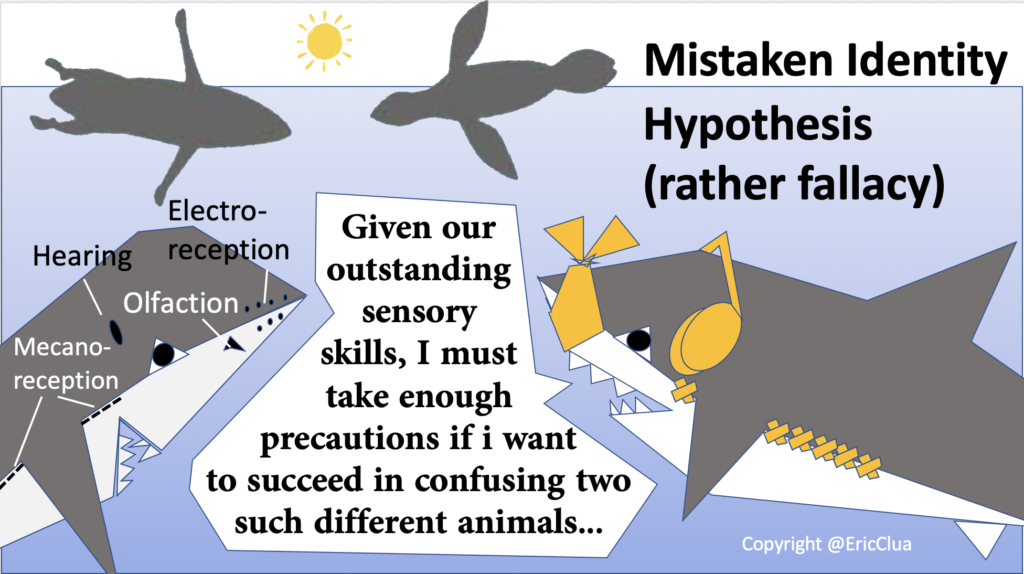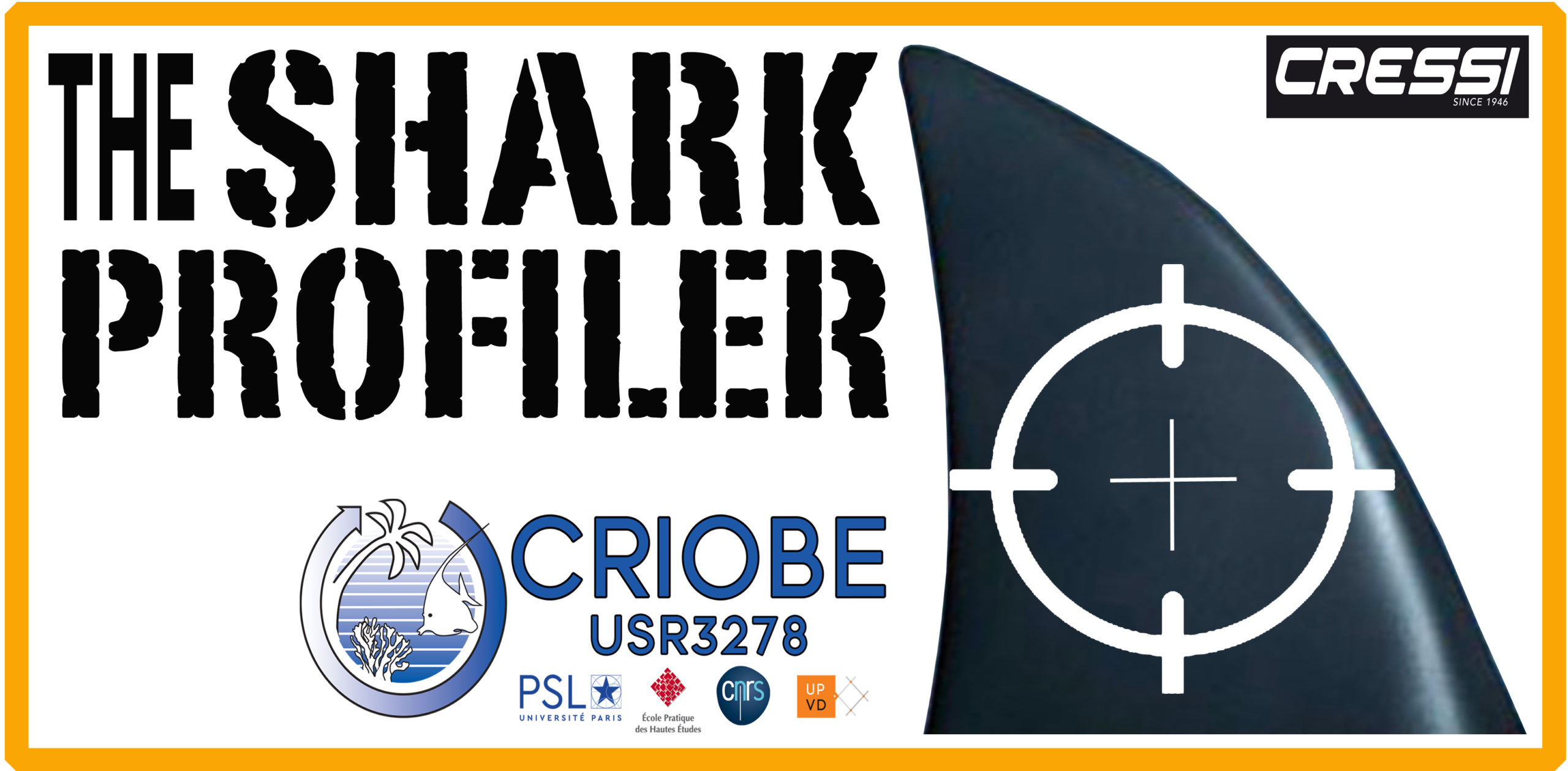I had already suggested in this same blog in 2021 that the unproven hypothesis that sharks could be “mistaken” when they bite a human by mistaking its silhouette for a natural prey such as a seal or a turtle is inadmissible. Today, my position has been scientifically confirmed in a paper (here in English) I have just published with my colleague Carl Meyer of the University of Hawaii. We have conducted an exhaustive review of the mention of this hypothesis in the literature since its emergence in the 1970s. We have shown that it has never been (really) proven, including in the 2021 paper by Ryan et al. which relies on a computer simulation showing the convergence between the retinal imprint of a surfer and a seal in sharks. Although this seems convincing, it does not mean that the shark really confuses the two! Our conclusion is that the exploration (or investigation) hypothesis is probably the best because it explains not only the ‘bite-and-spit’ but also the other bites. In fact, as explained in the article, sharks, curious by nature, constantly explore their environment to test new prey and, provided they are sufficiently bold and “risk-taking”, some – very rare – sharks sometimes test humans as unnatural prey. Afterwards, they either abandon this prey (notably for its lack of palatability because it is not fat enough) or they continue their predation (notably if their state of satiety and irrepressible hunger suggest it). In short, there is no need to be afraid of all sharks! Because ‘they are not mistaken’ and most often flee from humans…


Recent Comments